AI is transforming game animation in 2025, making it faster, more accessible, and affordable for developers of all sizes. From automating motion capture to generating lifelike animations, these tools are changing how games are made. Here's a quick look at the top 7 AI tools reshaping the industry:
- DeepMotion: AI motion capture from video for high-quality 3D animations. Plans start at $15/month.
- Adobe Firefly: Generates textures and visual assets from text prompts. Integrated with Adobe tools, starting at $22.99/month.
- Steve.AI: Turns text scripts into 2D animations for cutscenes or marketing. Pricing begins at $20/month.
- Blender (AI-Enhanced): Free, open-source tool with AI-assisted rigging and motion refinement for 2D and 3D animations.
- Runway ML: AI-powered motion synthesis and video generation, starting at $12/month.
- Animaker AI: Simplifies 2D animation creation with auto lip-sync and character movements. Plans start at $12.50/month.
- Vyond: Focused on automated lip-syncing and dialogue animations, starting at $25/month.
These tools cater to different needs, whether you're creating 2D or 3D animations, refining workflows, or producing promotional content. Each offers unique features and pricing to suit indie developers and large studios alike.
Quick Comparison
| Tool | Pricing (USD) | Animation Types | Best For |
|---|---|---|---|
| DeepMotion | $15-$50/month | 3D | Realistic character movements |
| Adobe Firefly | $22.99-$59.99/month | 2D, 3D | Textures, concept visuals |
| Steve.AI | $20-$60/month | 2D | Marketing, cutscene prototyping |
| Blender | Free | 2D, 3D | Indie developers, full 3D games |
| Runway ML | $12-$76/month | 2D, 3D | Rapid prototyping, effects |
| Animaker AI | $12.50-$39/month | 2D | Dialogue-heavy animations |
| Vyond | $25-$159/month | 2D | Cutscenes, training content |
AI tools are now essential in game animation, saving time and enabling developers to produce high-quality results without traditional barriers. Whether you're an indie dev or part of a studio, these tools can streamline your workflow and enhance your projects.
This AI Can Generate Animation for Game Characters! Dataset and Training Explained.
1. DeepMotion
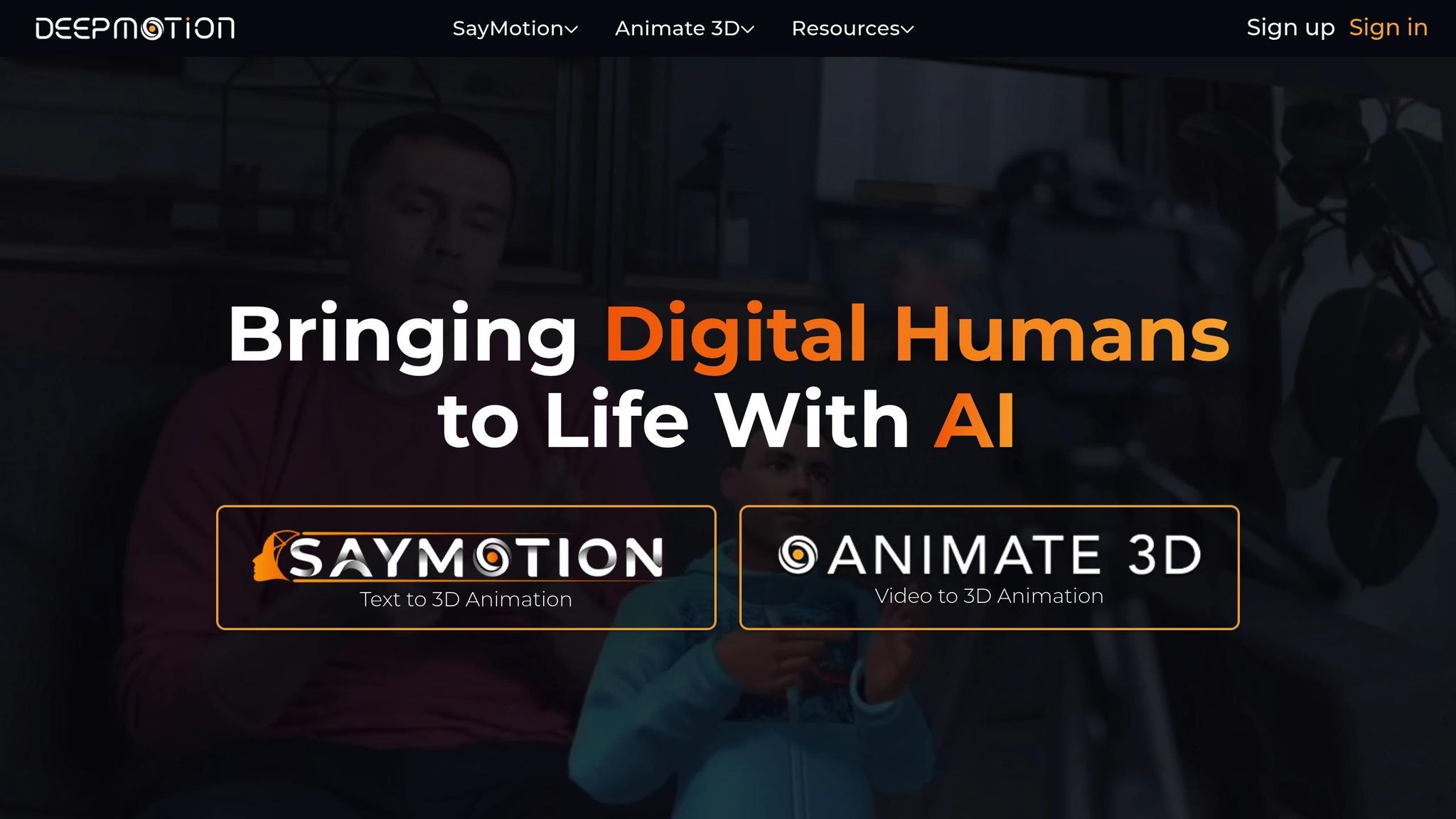
DeepMotion offers a cloud-based AI motion capture platform that delivers high-quality animations without requiring costly equipment.
AI-Driven Animation Features
DeepMotion uses a markerless motion capture system that transforms video into precise 3D animations in just minutes. The AI analyzes human movements, joint positions, and mechanics to capture even complex actions like combat, dancing, or athletic performances. It also converts facial expressions into detailed rig animations, bringing dynamic cutscenes to life.
Seamless Workflow Integration
DeepMotion works effortlessly with popular tools like Unity, Unreal Engine, and Blender. It supports FBX and BVH exports and provides API connections for custom automation, making it easy to fit into existing animation pipelines. This compatibility, paired with adaptable pricing, makes it a practical choice for a wide range of animation projects.
Flexible Pricing Options
DeepMotion’s subscription plans start at $15/month for basic features, while $50/month unlocks advanced processing and higher resolution. There’s also a pay-per-use option at $2 per minute. For larger needs, enterprise plans offer custom pricing and personalized support. These options make professional-grade animation accessible to developers of all scales.
Game Animation Applications
From lifelike character movements and combat sequences to crowd simulations and cinematic cutscenes, DeepMotion transforms simple video footage into polished animations. Its versatility makes it a valuable tool for creating immersive gaming experiences.
2. Adobe Firefly
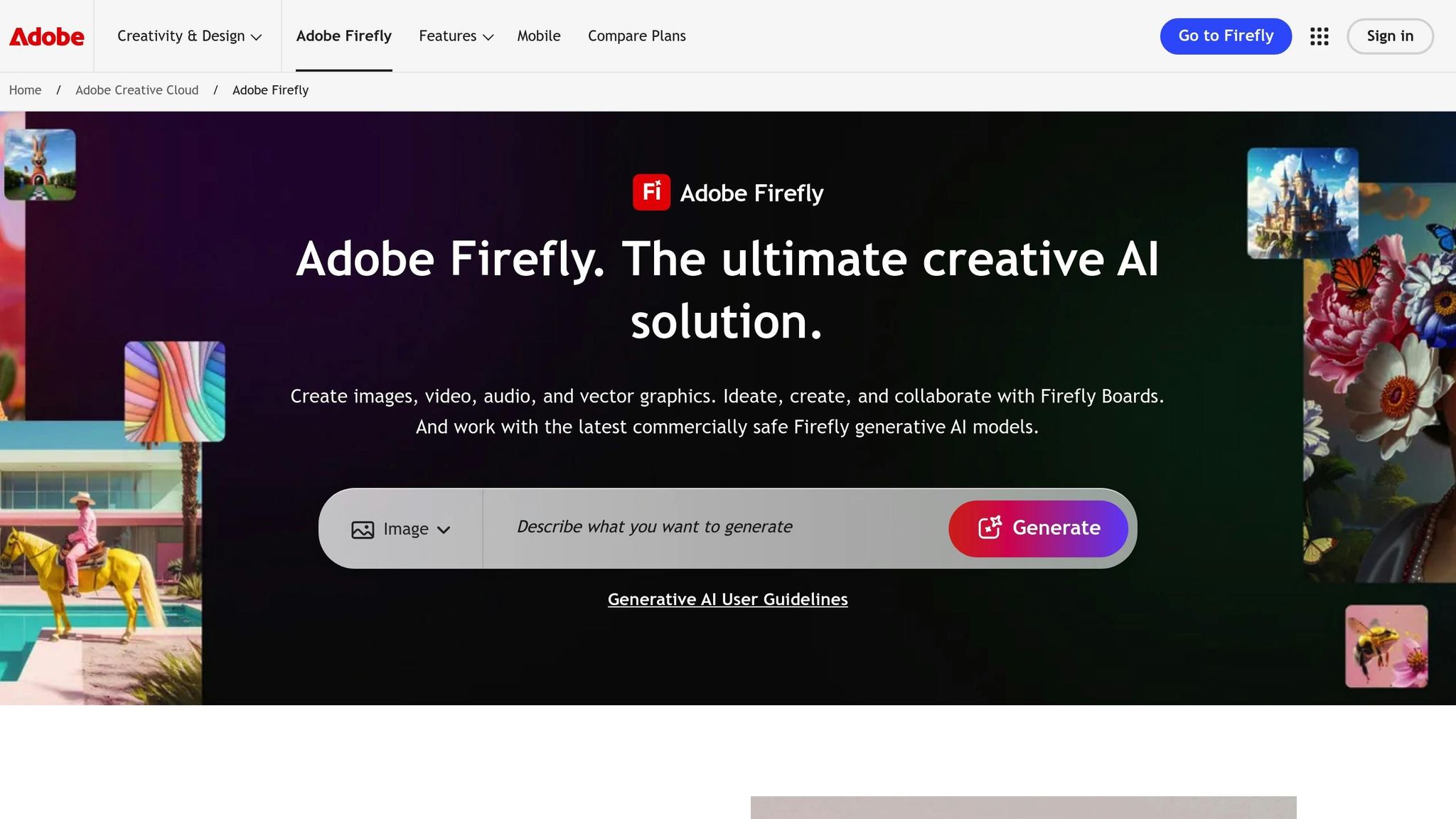
Adobe Firefly introduces generative AI into the creative workflow, giving game developers a powerful tool to quickly produce visual assets. Known for its ability to generate images and textures from text prompts, Firefly also sets the stage for creating dynamic elements in game animations. This makes the creative process in game development faster and more efficient.
AI-Powered Visual Asset Creation
Although Firefly doesn’t create full animations from text prompts, it excels at generating textures, lighting effects, and styled visuals that speed up the concept design process. Developers can use it to produce visual components that serve as a foundation for animated sequences. By enabling rapid iteration during the early stages of design, Firefly helps teams focus on refining these assets later using specialized animation tools.
Seamless Integration with Adobe Tools
Firefly works hand-in-hand with Adobe's Creative Cloud applications like After Effects and Premiere Pro. This compatibility ensures that AI-generated visuals can easily be polished into high-quality game assets. The use of standard file formats further simplifies the process, allowing assets to integrate smoothly into existing workflows without losing quality or consistency.
Broad Accessibility and Practical Applications
Firefly is designed to be user-friendly, making it a practical choice for developers of all experience levels. Many game development teams rely on it during the prototyping phase to create concept art and visual references. Whether it’s for environmental effects, character designs, or UI elements, Firefly simplifies the early stages of visual development, helping teams move quickly from initial concepts to fully realized animations.
3. Steve.AI
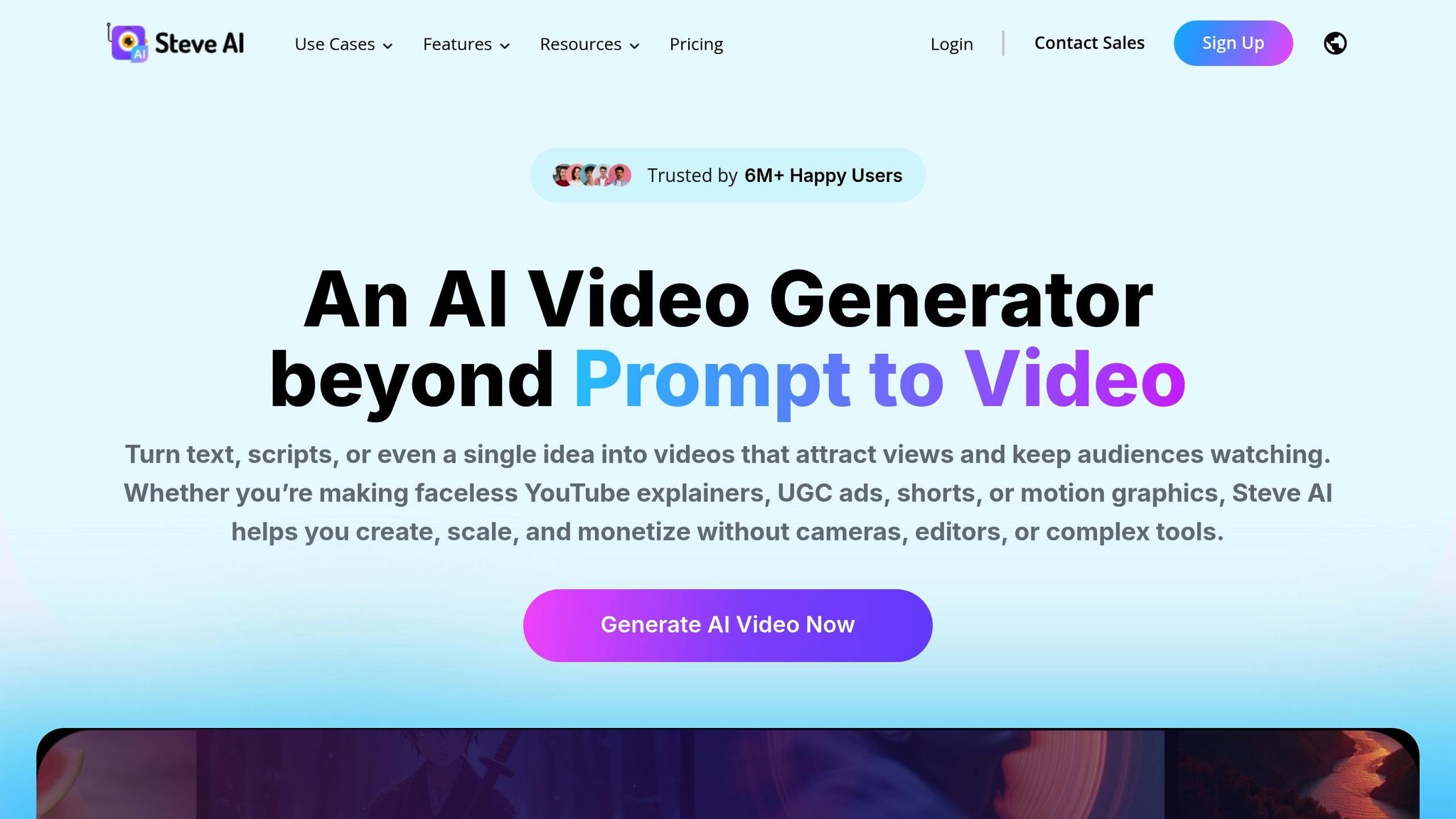
Steve.AI brings a fresh approach to animation by turning text scripts into animated sequences. Designed for game developers in need of quick, high-quality animations, this tool simplifies the animation process, making it accessible even to those without extensive animation experience.
AI-Powered Animation Features
Steve.AI uses artificial intelligence to transform written scripts into animated videos. By analyzing the text, it automatically selects visual elements, character movements, and scene transitions. Developers can input anything from dialogue and story outlines to gameplay descriptions, and the AI generates matching animations.
The tool also provides templates tailored to specific genres, such as fantasy, sci-fi, and contemporary themes. This means developers can quickly create animations that align with popular game styles. Whether it’s for promotional videos, cutscenes, or concept animations, Steve.AI can reduce production time from hours to just minutes.
Seamless Integration with Development Tools
Steve.AI supports standard video formats, offering resolutions up to 1080p, which are perfect for cutscenes or promotional content. These videos can be easily imported into game engines like Unity or Unreal Engine, fitting smoothly into existing workflows.
Additionally, the tool integrates with cloud-based storage platforms, making it easy for team members to collaborate remotely. This feature is particularly beneficial for indie or mobile game developers working across different locations, where remote teamwork is key.
Pricing and Availability
Steve.AI offers subscription plans starting at $20/month, which includes 10 exports. For unlimited exports and access to premium templates, the professional plan is available at $60/month. A free trial is also offered, allowing developers to explore its capabilities before committing.
This pricing structure makes professional-level animation more accessible to indie studios and solo developers, leveling the playing field in game animation.
Practical Applications in Game Development
Game developers use Steve.AI primarily for creating promotional content, such as videos for social media marketing or crowdfunding campaigns. It’s also a handy tool for crafting explainer videos that highlight gameplay mechanics or story elements, eliminating the need for a dedicated animation team.
Beyond marketing, Steve.AI is valuable for prototyping cutscenes and creating tutorial animations. These features help developers test narratives and improve player onboarding experiences. Its flexibility makes it a valuable resource for a wide range of game animation needs, solidifying its place among the latest AI-driven animation tools.
4. Blender (AI-Enhanced)
Blender, a free and open-source platform, has leveled up with AI enhancements, making it a go-to tool for developers tackling character and environmental animations. It offers a mix of efficiency and high-quality results, catering to a broad range of game animation needs.
Advanced Animation Features
Blender is packed with tools that simplify complex animation tasks. For instance, it can refine motion capture data by reducing jitter and filling in missing frames automatically through add-ons. The Rigify feature streamlines rigging by generating intricate rigs from simple skeletons, saving developers a significant amount of time. On top of that, its geometry nodes empower users to create procedural animations for environmental elements - think swaying grass, rippling water, or dynamic background details that react to game physics.
Smooth Workflow Integration
Blender fits seamlessly into existing workflows, thanks to its support for export formats that retain animation data. Its Python scripting capabilities and USD support make it easy to customize workflows and share assets without a hitch.
Free and Accessible
One of Blender's standout benefits is that it’s completely free. Developers can access all its features without spending a dime, while voluntary contributions help fund ongoing improvements. To make things even better, there’s a wealth of educational resources available to help users master the platform.
Perfect for Game Animation
Blender shines in creating lifelike character movements, facial animations for dialogue scenes, and procedural animations for environmental effects. Its non-linear editor and keyframe blending ensure smooth transitions, especially in combat sequences, making it an excellent choice for game developers.
sbb-itb-212c9ea
5. Runway ML
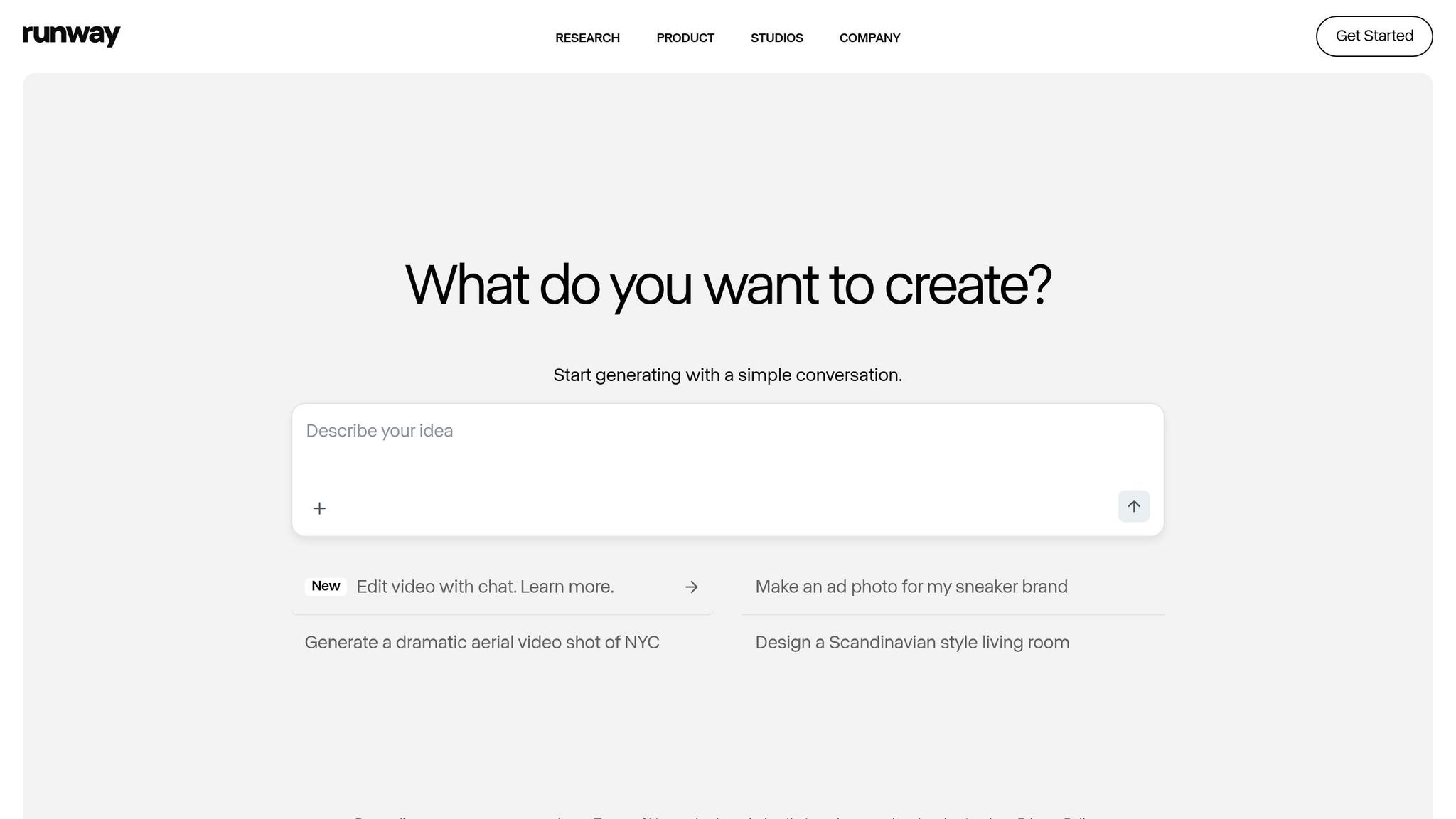
Runway ML is a cloud-based AI platform designed to simplify game animation using machine learning. By removing much of the technical complexity, it opens up advanced animation techniques to game developers, regardless of their technical expertise.
AI-driven Animation Capabilities
Runway ML brings animation to life with features like motion synthesis and video generation, turning static images into dynamic animations. With its Gen-2 model, developers can create animated backgrounds, environmental effects, and character movements using either text prompts or reference images. Its motion tracking feature analyzes existing footage to replicate movement patterns in game assets, while style transfer ensures a unified visual aesthetic across animations.
The platform’s real-time processing is a game-changer for rapid prototyping. Developers can experiment with animation styles and movements without spending hours on manual keyframing. The AI fills in the gaps between keyframes, delivering smoother transitions and more natural character movements. This capability makes it easier to balance creativity with practical implementation.
Integration with Existing Workflows
Runway ML seamlessly integrates into popular game development pipelines through its API and standard export formats like MP4 and MOV. This makes it easy to import animations into engines such as Unity or Unreal Engine. Its browser-based, collaborative interface supports real-time project sharing and remote access, which is especially helpful for teams working across different locations or devices.
Pricing and Accessibility
Runway ML uses a credit-based pricing model that adjusts to individual usage levels. Plans start at $12 per month, with higher tiers available for team collaboration. A free tier with limited credits is also available, giving developers a chance to explore the platform before committing to a paid plan. This makes it an appealing option for indie developers and smaller studios operating on tight budgets.
Use Cases for Game Animation
Runway ML shines in creating atmospheric animations such as fog effects, particle systems, and other elements that enhance environmental storytelling. Developers often use it for cutscenes, background animations, and pre-production previews.
The platform is equally effective for stylized character animations, particularly in mobile games, where maintaining a consistent art style across various movements is crucial. It’s also a valuable tool for rapid iteration during the design phase, enabling developers to visualize multiple animation approaches quickly before committing to more detailed manual work.
6. Animaker AI
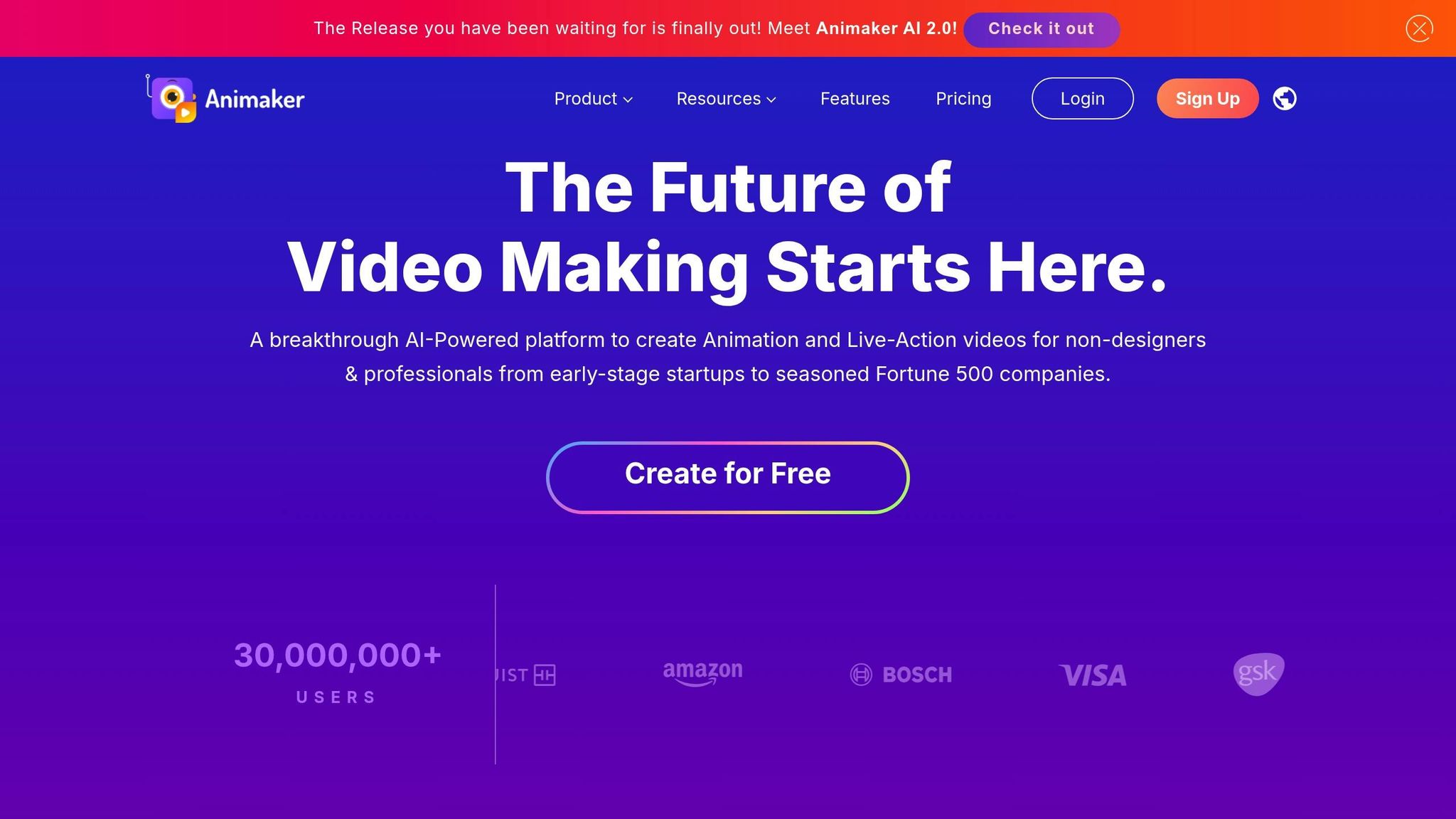
Animaker AI is a cloud-based platform designed to make 2D game animation more accessible for individual creators and small studios. It’s tailored for those who want high-quality animations without having to navigate a steep learning curve.
The tool supports widely-used file formats, ensuring smooth integration into game development workflows. Animaker AI also offers flexible subscription plans, including a free tier that lets users explore its core features before committing. Its main strength lies in simplifying the process of creating and exporting animated assets, offering an affordable and practical solution for game animation needs.
This emphasis on ease of use and functionality leads us to the next tool, which takes AI-powered game animation to another level.
7. Vyond
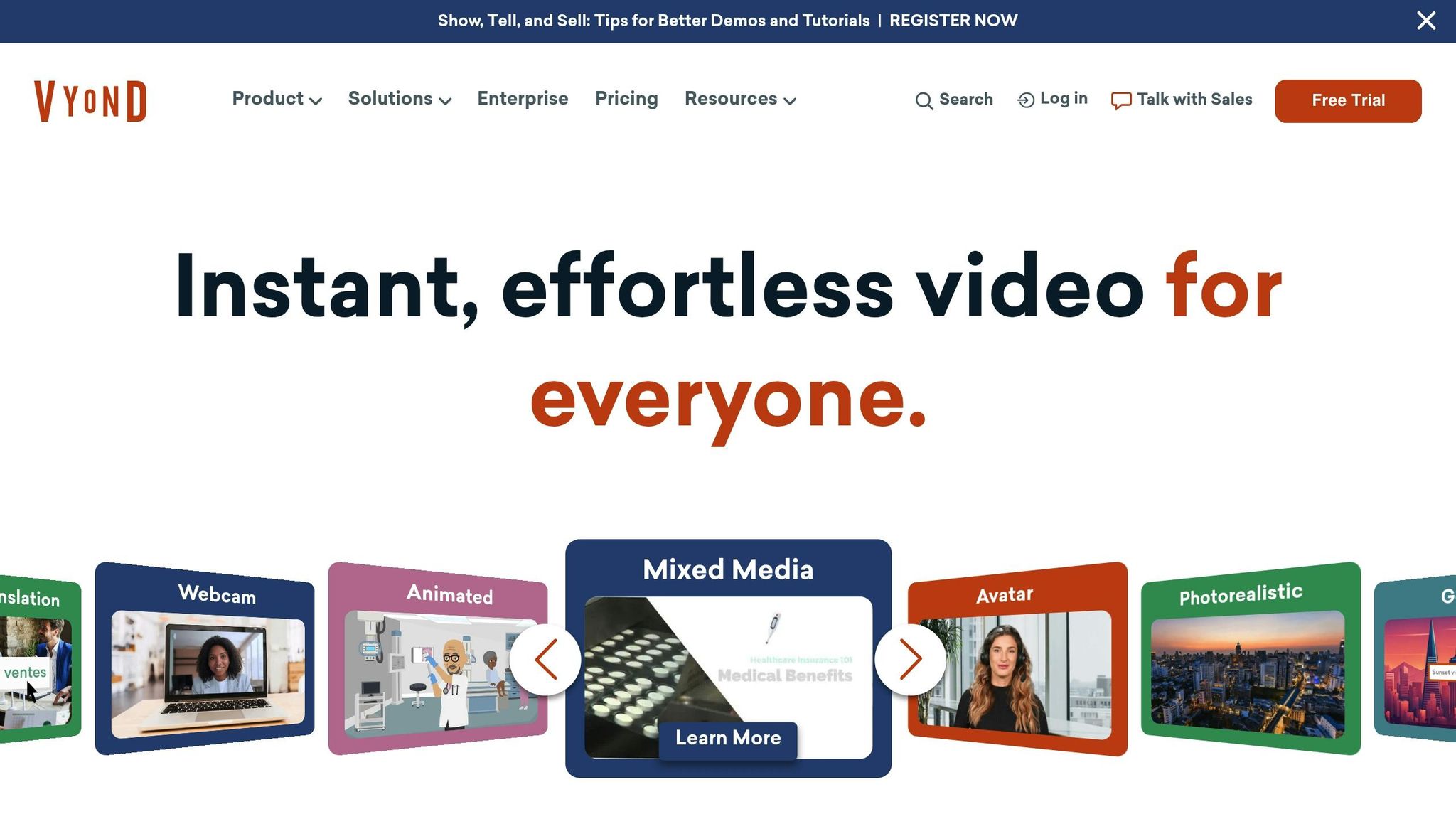
Vyond is an animation platform that now incorporates AI features, making it a handy tool for indie game developers looking to create animated cutscenes and character interactions. Let’s take a closer look at how its AI capabilities simplify the animation process.
AI-Driven Animation Capabilities
One standout feature of Vyond is its automated lip-syncing. This tool analyzes voice recordings and adjusts character mouth movements to match the dialogue. By automating this process, Vyond saves time and ensures smooth, consistent lip movements across all characters in dialogue-heavy animations.
Integration with Existing Workflows
As a cloud-based platform, Vyond offers the convenience of exporting animations in multiple resolutions. This flexibility means developers can easily integrate animated sequences into their projects without compatibility issues, making it a seamless addition to any workflow.
Pricing and Use Cases
Vyond provides tiered subscription plans and a free trial, making it accessible for a variety of budgets. Its intuitive interface and automated features are perfect for creating cutscenes, dialogue sequences, and even animations for educational games. For teams lacking dedicated animators, Vyond’s professional-grade assets offer a practical and budget-friendly solution, especially for training or instructional game development.
Tool Comparison Table
Here’s a quick look at the key features of popular AI animation tools to help you make an informed choice. This table highlights pricing, compatibility, and standout features for each tool.
| Tool | Pricing (USD) | Animation Types | Platform Compatibility | Key AI Features | Best Use Cases |
|---|---|---|---|---|---|
| DeepMotion | $15-$50/month | 3D Motion Capture | Web, Windows, Mac | AI motion capture from video, automated rigging | Character animation, realistic movement sequences |
| Adobe Firefly | $22.99-$59.99/month | 2D, 3D | Web, Windows, Mac | AI-generated animations, style transfer | Professional game studios, complex visual effects |
| Steve.AI | $20-$60/month | 2D | Web | Automated scene creation, AI voiceovers | Marketing videos, educational game content |
| Blender (AI-Enhanced) | Free (open source) | 2D, 3D | Windows, Mac, Linux | AI-assisted modeling, automated rigging | Indie developers, full 3D game production |
| Runway ML | $12-$76/month | 2D, 3D | Web, Windows, Mac | AI video generation, motion tracking | Experimental animations, rapid prototyping |
| Animaker AI | $12.5-$39/month | 2D | Web | Smart move technology, auto lip-sync | Character animations, dialogue sequences |
| Vyond | $25-$159/month | 2D | Web | Automated lip-syncing, character templates | Cutscenes, educational games, training content |
The pricing spans from free options like Blender to higher-end choices such as Vyond, catering to a variety of budgets and needs. Tools like DeepMotion focus on converting videos into 3D animations, while Adobe Firefly, Blender, and Runway ML cover both 2D and 3D workflows. Meanwhile, Steve.AI, Animaker AI, and Vyond are tailored for 2D animations, making them suitable for specific game genres or marketing projects.
Conclusion
AI tools are transforming the way developers approach game animation, giving teams of all sizes access to professional-grade capabilities. Today, 90% of game development studios incorporate AI into their workflows, a shift that has taken these tools from experimental to indispensable. By slashing production times by up to 80% and enabling rapid creation of 3D models and animations, AI has become a game-changer in the industry.
The numbers speak volumes: the global AI in game development market, worth $3.2 billion in 2025, is expected to skyrocket to $58.8 billion by 2035. This explosive growth highlights how AI is leveling the playing field, empowering indie developers and smaller teams to produce complex, polished games - even on tight budgets.
When choosing the right tools, it’s important to align them with your specific animation needs. For instance, decide whether you require 2D or 3D animation, motion capture features, or specialized options like automated lip-syncing. Equally critical is how well these tools integrate with your existing workflow. Platforms that work seamlessly with Unity, Unreal Engine, or Adobe Creative Cloud can significantly streamline your production process.
Budget considerations also play a major role. As highlighted in the comparison table, options range from free tools like Blender to premium software like Vyond. While AI can accelerate asset creation by as much as 67%, it’s worth noting that only 31% of AI-generated animations were deemed ready for broadcast without significant edits, according to a Stanford study. This underscores the need to allocate time for quality control and final adjustments in your production schedule.
The adoption of AI in animation is accelerating rapidly. By the end of 2024, 78% of animation studios were using AI tools, compared to just 23% in early 2023. Whether you’re an indie developer creating your first game or part of a larger studio, the tools covered in this guide offer practical ways to enhance creativity, efficiency, and cost-effectiveness in your animation workflow.
For more AI-driven solutions, check out AI Apps. With over 1,000 curated applications across various categories, you can easily find tools tailored to your specific needs and budget using advanced filtering options.
FAQs
How do AI tools like DeepMotion and Adobe Firefly work within game development workflows?
DeepMotion transforms game development workflows with its AI-driven motion capture and animation tools. These tools work effortlessly with game engines like Unreal Engine, offering features such as real-time body tracking and automatic retargeting. By simplifying the animation process, they help developers save valuable time and focus on other creative aspects of their projects.
Adobe Firefly brings a fresh approach to game development through its AI-powered creative tools. These tools automate tasks like design and content generation, enabling developers to quickly produce assets and move seamlessly from initial concepts to production. This not only boosts efficiency but also allows for greater creative adaptability. Both DeepMotion and Adobe Firefly are designed to integrate smoothly into existing workflows, making the game development process faster and more dynamic.
What’s the difference between AI tools for 2D animation like Steve.AI and Animaker AI versus 3D tools like DeepMotion and Blender?
AI tools for 2D animation, like Steve.AI and Animaker AI, make it easier than ever to create flat, two-dimensional visuals. With features like intuitive interfaces, ready-made templates, and automation, these tools allow users to produce animations quickly and efficiently. They're perfect for projects such as explainer videos, marketing campaigns, or straightforward storytelling.
On the other hand, 3D animation tools - including DeepMotion and Blender - are designed for crafting detailed, three-dimensional models and environments. DeepMotion leverages AI for motion capture, enabling lifelike character movements, while Blender provides powerful tools for modeling, rendering, and animating complex, realistic scenes. The main distinction between the two lies in their focus: 2D tools emphasize speed and ease of use, whereas 3D tools offer more control and realism, catering to intricate and detailed projects.
How can indie game developers use AI animation tools to save money and time?
Indie game developers have a powerful ally in AI animation tools, which help trim costs and simplify workflows. By automating labor-intensive tasks like character rigging, motion capture, and facial animation, these tools save both time and money.
For smaller studios, AI opens the door to producing top-tier animations without the need for large teams or pricey equipment. This levels the playing field, giving indie creators a chance to compete with larger developers while staying within their often limited budgets.



